

3 Fonteinen is a Belgian brewery, specialized in geuze and kriek. The brewery is situated in Beersel, near Brussels and produces classic versions of both kriek and geuze.


3 Fonteinen is a Belgian brewery, specialized in geuze and kriek. The brewery is situated in Beersel, near Brussels and produces classic versions of both kriek and geuze.
3 Fonteinen was founded in 1887 as a café and geuzestekerij, a place where geuze is produced by blending old and new lambics, acquired from other breweries. The enterprise was bought by Gaston De Belder in 1953, who expanded it with a restaurant and left it to his sons Armand and Guido in 1982. [1]
In 1998, a brewery installation was bought. Apart from using its own lambic, 3 Fonteinen uses lambic made by Boon, Girardin and Lindemans for its geuze. 3 Fonteinen is one of the few remaining geuzestekerijen.
The Mijol Club, a literary club, founded by Herman Teirlinck, used to convene in the café. [2]
In May 2009, a faulty thermostat caused 3000 bottles to explode. The remaining overheated geuze was made into an eau de vie called "Armand's Spirit", the sales of which enough allowed the brewery to continue operations. [3]
In March 2013, after four years of interruption, Brewery 3 Fonteinen inaugurated its new brewing installation and is brewing its own lambic again. During the four years without its own installation 3 Fonteinen managed to keep its head above water by blending lambic that they bought from nearby lambic breweries like Boon and Girardin.
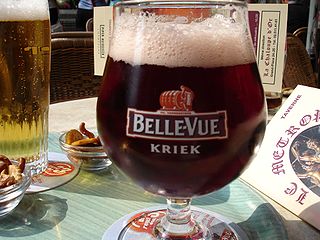
Kriek lambic is a style of Belgian beer, made by fermenting lambic with sour Morello cherries. Traditionally "Schaarbeekse krieken" from the area around Brussels are used. As the Schaarbeek type cherries have become more difficult to find, some brewers have replaced these with other varieties of sour cherries, sometimes imported.

Lambic is a type of beer brewed in the Pajottenland region of Belgium southwest of Brussels and in Brussels itself since the 13th century. Types of lambic beers include gueuze, kriek lambic and framboise. Lambic differs from most other beers in that it is fermented through exposure to wild yeasts and bacteria native to the Zenne valley, as opposed to exposure to carefully cultivated strains of brewer's yeast. This process gives the beer its distinctive flavour: dry, vinous, and cidery, often with a tart aftertaste.
Big Rock Brewery is a Canadian public company and the largest brewery that is based in Calgary, Alberta, Canada. Additional brewing operations are located in Vancouver, British Columbia; Etobicoke, Ontario; and Liberty Village in Toronto, Ontario. Big Rock distributes a variety of beers and ciders throughout Canada.
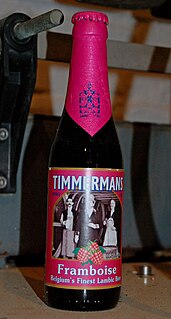
Framboise is a Belgian lambic beer fermented with raspberry.

Alken-Maes is a Belgian brewery created out of the 1988 merger of two small breweries, Maes located at Kontich-Waarloos and Cristal-Alken located at Alken. It was bought by Scottish & Newcastle in 2000, who were taken over by Carlsberg and Heineken in 2007.
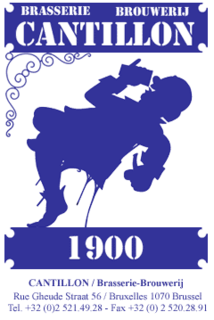
Brasserie-Brouwerij Cantillon is a small Belgian traditional family brewery based in Anderlecht, Brussels. Cantillon was founded in 1900 and brews exclusively lambic beers.

Beer in Belgium varies from pale lager to amber ales, lambic beers, Flemish red ales, sour brown ales, strong ales and stouts. In 2018, there were approximately 304 active breweries in Belgium, including international companies, such as AB InBev, and traditional breweries including Trappist monasteries. On average, Belgians drink 68 liters of beer each year, down from around 200 each year in 1900. Most beers are bought or served in bottles, rather than cans, and almost every beer has its own branded, sometimes uniquely shaped, glass. In 2016, UNESCO inscribed Belgian beer culture on their list of the intangible cultural heritage of humanity.

Brewery Ommegang is a brewery located near Cooperstown, New York, United States, that specializes in Belgian-style ales.
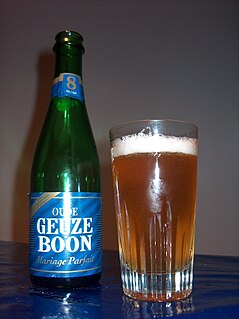
Gueuze is a type of lambic, a Belgian beer. It is made by blending young (1-year-old) and old lambics, which is bottled for a second fermentation. Because the young lambics are not fully fermented, the blended beer contains fermentable sugars, which allow a second fermentation to occur.
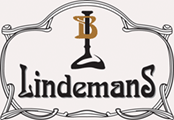
Lindemans Brewery is a Belgian family brewery based in Vlezenbeek, a small town in the Flemish Brabant southwest of Brussels. It produces lambics, a style of Belgian ale that uses raw wheat and wild yeast.

Brettanomyces bruxellensis is a yeast associated with and named after, the Senne valley near Brussels, Belgium.

Oud Beersel is a Belgian lambic brewery. It is a member of HORAL, whose main event is Toer De Geuze every two years.
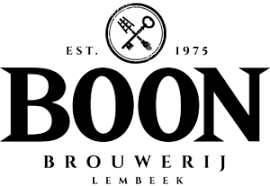
Boon Brewery is a Belgian brewery situated in Lembeek, near Brussels, that mainly produces geuze and kriek beer of a fairly traditional lambic variety, but using modern brewing techniques and equipment. Other products of the brewery including Faro beer and Duivelsbier, the traditional beer of Halle.
The High Council for Artisanal Lambic Beers is a non-profit organisation that brings together the gueuze brewers and blenders of the Pajottenland and Zenne Valley in Belgium.
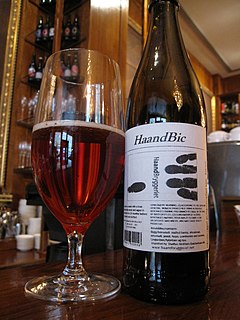
Sour beer is beer which has an intentionally acidic, tart, or sour taste. Traditional sour beer styles include Belgian lambics, gueuze and Flanders red ale, and German gose and Berliner Weisse.
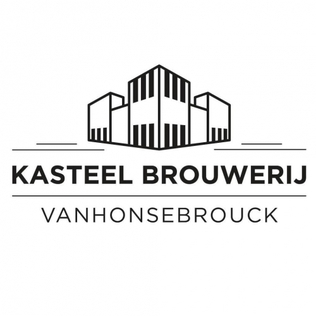
Van Honsebrouck is a Belgian brewery in Ingelmunster, Belgium. Founded in 1865 as Sint-Jozef Brewery, it was renamed to Brewery Van Honsebrouck in 1953. It is one of two breweries outside of Pajottenland to produce lambic beer.

Brasserie de la Senne is a brewery in Brussels, Belgium, named for the river Senne which flows through the city.
Grain d'Orge Brewery "Brasserie du Grain d’Orge" is a microbrewery in the village of Nombourg in Wallonia, Belgium. The Wallonia tourist board has given the pub and brewery the label "Bistrot de Terroir", which distinguishes the "cafés typiques de Wallonie" that provide a warm welcoming atmosphere and the quality of an authentic establishment and the authentic experience, they also let visitors discover regional specialties.

Tilquin is a Belgian lambic beer blendery based in Bierghes, Brussels, founded in 2009 by Pierre Tilquin. Tilquin is the only lambic blendery in the mainly French-speaking, southern region of Wallonia. Tilquin also is exclusively the only blendery that is allowed to blend of one, two, and three-year-old lambics with wort acquired from Boon, Lindemans, Girardin, and Cantillon breweries.

A barrel-aged beer is a beer that has been aged for a period of time in a wooden barrel. Typically, these barrels once housed bourbon, whisky, wine, or, to a lesser extent, brandy, sherry, or port. There is a particular tradition of barrel ageing beer in Belgium, notably of lambic beers. The first bourbon barrel-aged beers were produced in the United States in the early 1990s.